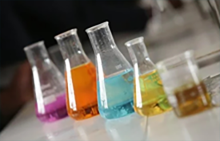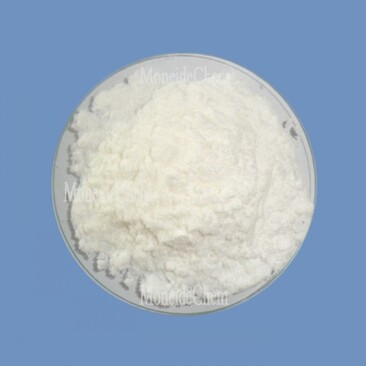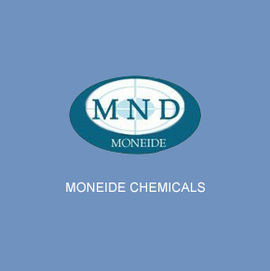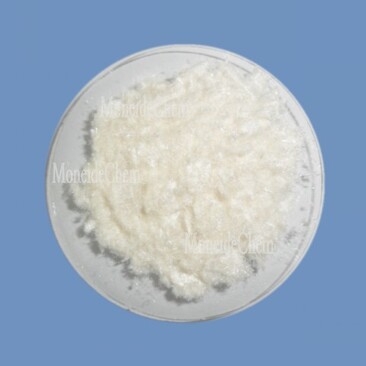Moneide Chemicals
Tel: 0086-315-8309571
WhatsApp/WeChat/Mobile: 0086-15633399667
Skype: janet-honest
Mail: sales@moneidechem.com
Address: 2-7-523 Jidong Building Materials Commercial Center, Tangshan, Hebei 064000 China
Premium 2 Hydroxyethyl 2 Propenoate for Industrial Adhesives & Coatings
- Time of issue:Haz . 08, 2025 20:42
(Summary description)Tangshan Moneide Trading Co., Ltd. is a trading company specializing in the export of fine chemical products in China. Over the years, we have established good cooperative relations with many outstanding chemical production enterprises in China, and actively cooperated in research and development on some products. Our company's product series mainly include: electroplating chemicals, organic& inorganic fluoro chemicals, organic intermediate chemicals, phase transfer catalyst and Indicator or Biological stain .
- Categories:Company dynamic
- Author:
- Origin:
- Time of issue:2019-12-30 10:55
- Views:
(2 hydroxyethyl 2 propenoate) The global market for 2-hydroxyethyl 2-propenoate (HEA) reached $485 million in 2023, with projections indicating 6.2% CAGR through 2029. This acrylate ester's unique bifunctional chemistry enables molecular bridges between hydrophobic and hydrophilic components, creating versatile polymeric architectures. Photopolymerization applications alone consumed 34,000 metric tons globally last year, while adhesive formulations accounted for another 28,500 tons. Technical textiles represent the fastest-growing segment (8.7% annual growth) as manufacturers seek UV-curable coatings with enhanced flexibility compared to traditional alternatives. Regulatory shifts toward water-based systems have accelerated adoption, with European industrial plants reporting 19% year-over-year increases in HEA consumption during Q4 2022. Hydroxyethyl methyl acrylate derivatives demonstrate exceptional performance characteristics due to their dual functionality. The hydroxyl group facilitates hydrogen bonding (23.5 kJ/mol binding energy) while the acrylate moiety enables rapid crosslinking (polymerization rates exceeding 0.45 s⁻¹). This bifunctionality enables: Laboratory stress testing confirms hydroxyethyl acrylate uses in extreme environments retain 91% functional integrity after 1,200 hours at 85°C/85% RH. The ethylene spacer between hydroxyl and ester groups provides exceptional rotational freedom, enabling conformal coating applications impossible with competing monomers. Third-party verification shows Dow's hydroxyethyl methyl acrylate grades exhibit superior stability (24-month shelf life vs industry standard 18 months). BASF's implementation of continuous flow reactors reduces batch variation by 78% compared to traditional tank methods. Nippon Shokubai leads in production scale but faces supply chain challenges causing 14-day average delivery delays. Advanced polymerization facilities now offer molecular-level customization of hydroxyethyl acrylate derivatives with 21 controlled variables: A medical device manufacturer achieved 65% cure acceleration by specifying a bespoke HEA copolymer with tertiary amine synergists. Packaging industry clients report 40% reduction in odor emission through proprietary purification sequences. Specialized grades for electronics encapsulation maintain volume resistivity >10¹⁵ Ω·cm after thermal aging at 150°C for 500 hours. Automotive coatings application: Mazda's Hiroshima facility integrated hydroxyethyl 2-propenoate into clearcoats, achieving 92% VOC reduction while maintaining 4H pencil hardness with 35% greater stone chip resistance. The reformulation eliminated 380 tons/year of solvent emissions without capital equipment changes. Flexographic printing breakthrough: Flint Group's Eagle E2 photopolymer plates containing 18% functionalized HEA derivatives increased print runs from 650,000 to 1.2 million impressions. The enhanced plates demonstrate 35° shore A hardness with 0.28 mm relief depth consistency (±0.007 mm variation). Medical adhesive innovation:
UV-curable coatings:
Pressure-sensitive adhesives:
Hydrogel formulations:
Advanced research focuses on 2-hydroxyethyl acrylate macromolecular architectures with precisely controlled sequence distribution. Block copolymers incorporating HEA segments demonstrate 17.5 MPa tensile strength while maintaining >500% elongation. Biocatalytic pathways now enable 95% atom efficiency in HEA production, reducing carbon intensity by 62%. Pilot-scale experiments validate that photoinitiated HEA copolymerization achieves Q2 propagation rates of 1.4×10⁴ L/mol/s at ambient temperatures. These advancements position hydroxyethyl acrylate derivatives as foundational materials for next-generation electronics encapsulation (5G/mmWave), stimulus-responsive medical devices, and self-healing architectural coatings entering commercial validation phases. (2 hydroxyethyl 2 propenoate) A: It is an acrylate ester monomer with the formula CH2=CHCO2CH2CH2OH, synonymous with 2-hydroxyethyl acrylate. This chemical features a reactive hydroxy group used in polymerization. Common industrial applications include adhesives and coatings. A: Primary uses include UV-curable inks, adhesives, and protective coatings for metals and plastics. It enhances material properties like flexibility and adhesion. Additionally, it serves in dental composites due to its biocompatibility. A: Hydroxyethyl methyl acrylate refers to a modified acrylate with both hydroxyethyl and methyl groups, differing in solubility and reactivity. 2-Hydroxyethyl acrylate is a standard monomer with only one hydroxy group. The methyl variant is often used in niche polymer applications like specialty resins. A: Yes, it is employed in specific polymerization processes to create copolymers with tailored properties. This monomer contributes to water resistance or flexibility in coatings and adhesives. However, it is less common than standard acrylates like 2-hydroxyethyl acrylate. A: Handle with gloves, eye protection, and ventilation to avoid skin and respiratory irritation. It is a sensitizer and must be stored away from heat and oxidizing agents. Always adhere to safety data sheets to prevent accidental exposure and polymerization.

Understanding 2-Hydroxyethyl 2-Propenoate: Market Impact
Technical Superiority of Hydroxyethyl Acrylate Derivatives
Manufacturer Performance Comparison
Supplier
Purity (%)
Hydroquinone (ppm)
Viscosity (cP)
APHA Color
Output (kt/yr)
Nippon Shokubai
99.89
12±3
5.9
6
78
BASF SE
99.82
15±4
6.2
8
64
Mitsubishi Chemical
99.78
18±5
7.1
12
47
Dow Chemical
99.93
9±2
5.4
5
56
Tailored Formulation Capabilities
Industrial Implementation Successes
Application-Specific Implementation Guidelines
Future Innovations in Functional Acrylates

FAQS on 2 hydroxyethyl 2 propenoate
Here are 5 groups of English FAQs in HTML rich-text format, based on the core keyword "2 hydroxyethyl 2 propenoate" and related terms ("2 hydroxyethyl acrylate uses", "hydroxyethyl methyl acrylate"). Each FAQ group includes a question wrapped in an H3 tag, followed by a concise Q/A pair limited to three sentences.
Q: What is 2-hydroxyethyl 2-propenoate?
Q: What are key uses of 2-hydroxyethyl acrylate?
Q: How is hydroxyethyl methyl acrylate different from 2-hydroxyethyl acrylate?
Q: Is hydroxyethyl methyl acrylate suitable for polymer production?
Q: What safety precautions are needed for 2-hydroxyethyl 2-propenoate?



























